Have you ever tried Zero Dollar Garden Hacks? Go through this article and find the simplest gardening tricks without spending money!
The garden centers are full of gadgets and tools that might help you with gardening, but they cost a lot. If you are looking for a cheap solution, we have some great Zero Dollar Garden Hacks for you!
Have a look at the best DIY garden hacks here
Zero Dollar Garden Hacks
1. Organic Fertilizer from Vegetable Scraps
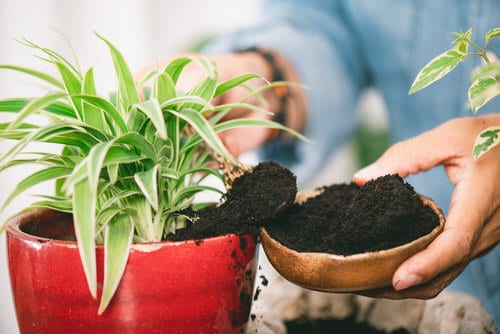
Prepare organic fertilizer from banana peels, tea leaves, and coffee grounds. We have a great article on it here.
2. Empty Soda Bottle and a Sock to Water Plants
How about making your own little drip irrigation for plants? Make some holes in an old plastic bottle and put the sock inside it after soaking it in water.
Poke the bottle in the garden in a way that its cap is visible, and it will deliver water straight to plant roots. You can pour more water using the cap.
Have a look at some useful garden projects using bottles here
3. Seed Starting Pots from Old Newspapers
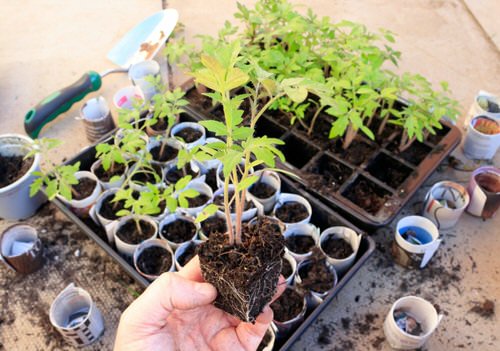
Use 2-3 pages of old newspaper to make a 4 sheet stack. Now, cut the newspaper into three parts and roll each one to form a round ‘cup.’ Fold the edges at the bottom to close the end, and voila! You have a biodegradable seedling pot!
Check out some great seed starting hacks here
4. Re-use Boiled Pasta or Vegetable Water
You can use the leftover water after boiling vegetables or cereals for the plants as it is loaded with starch and essential minerals. You’ll conserve water and provide necessary nutrients to the soil at zero cost!
Use pasta water and leftover water after boiling potato, rice, beans, and vegetables.
Note: Allow the water to cool down completely before using it on the garden soil.
5. Junk Mail Mulch
Do not let the junk mail and old newspaper go to waste. Shred them using a paper shredder and use it as a mulch in your garden around the plants. Water it well and cover it with a layer of soil.
6. Eggshells!

Made up of mostly calcium carbonate, eggshells are also rich in magnesium, potassium, iron, and phosphorus in good quantity, which can be beneficial for your plants in many ways. You can use them for composting, seedlings germination, fertilizer, and mulching. To learn how in detail, check out our article here.
7. Zip Ties to Secure Vining Plants
Keep the climbing plants from dangling here and thereby securing them with zip ties on trellis, railings, or anywhere you want them to grow. It keeps them arranged at absolutely no cost!
8. Use Baking Soda for Sweet Tomatoes
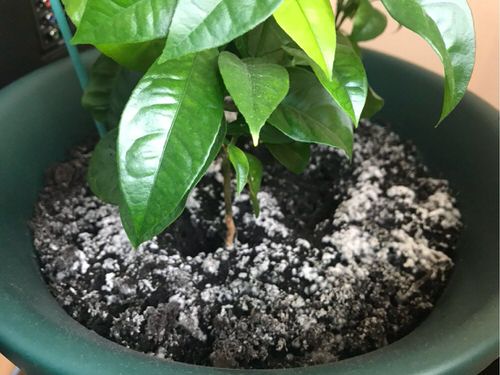
Want to grow tomatoes with a sweet taste? Adding baking soda to the soil will do the trick as it helps lower the acidity in the soil.
9. Use Tea Waste or Coffee Grounds
You can use coffee grounds as fertilizer, compost, mulching, and pesticide. You can also use teabags as plant food as they have 4.15% nitrogen and other nutrition that nourish the soil. We have a great article on tea bag uses in the garden here.
Check out awesome coffee uses in the garden here
10. Banana Peels!
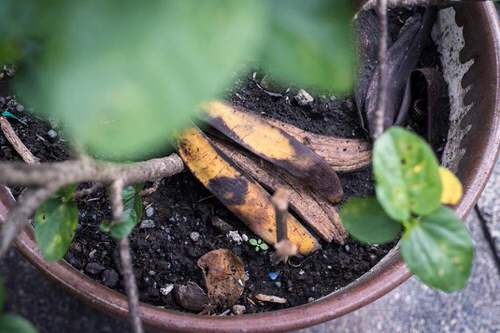
Bananas are a good source of phosphorus and potassium, and dried banana peels can be used as a fertilizer for plants. They also work great as an organic, side-dressing treatment for most landscape and garden plants. We have a great article on Banana Peel Uses In The Garden here.
11. Use Cardboards to Get Rid of Weeds and Grass
Are you worried about your lawn full of weed and grass? Get some cardboards and old newspapers to cover the entire lawn. It will smother grass, prevent new ones from growing back, and act as a mulch!
12. Use the Power of Companion Planting
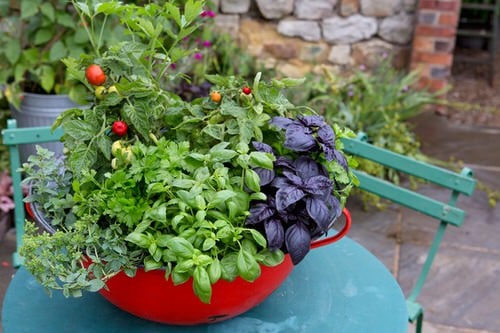
Companion planting improves yield and protects the plants from growth-inhibiting pests and insects. We have great articles on companion planting on:
- Best Strawberry Companion Plants
- Vegetable Gardening Tips on Companion Planting
- Tomato Companion Plants
- Zucchini Companion Plants
- Arugula Companion Plants
13. Zip Lock Bag for Pests
Do not throw away the used zip bags and use them to protect the citrus and other fruits from pests in your garden. Just cover the fruits when they are set and wait till they are ripe!
14. Grow Veggies in Bags
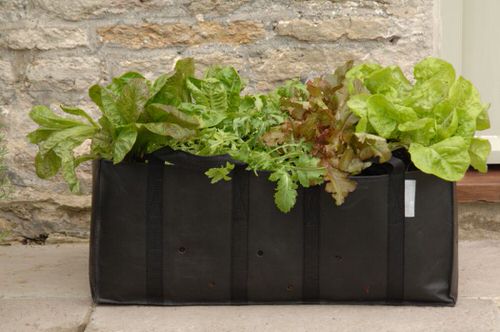
Growing vegetables in bags will save you from tilling the soil and removing weeds, thus saving you a lot of time and money in the process. We have a great article on vegetables you can grow in bags here.
15. Used Muffin Tin for Spacing out Seeds
Muffin tins are great for marking holes in the soil at an equal distance. Simply press the tin in the garden soil to make an impression, and you will have equally spaced-out holes for planting seedlings.
16. Used Plastic Clamshell Container for Starting Seeds
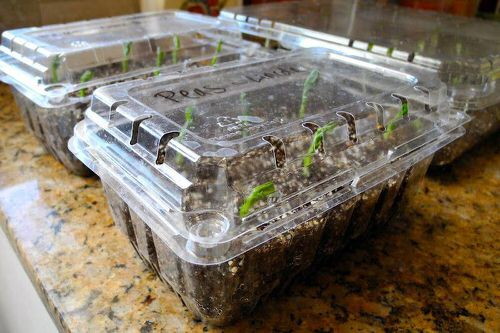
Remember the plastic containers you get when you order lunch or salad boxes? They can be of great help to start seeds or grow microgreens in a limited space neatly.
17. Start Seeds in Plastic Bottles
Used plastic bottles are great for starting seedlings. Just cut them in half, pour in soil or potting mix, plant the seedlings and keep them on a sunny windowsill.
18. Citrus-Rinds for Starting New Seedlings

Cut the citrus fruits in half, scoop out the pulp, and voila! You have a biodegradable cup for starting seeds! They look good and smell great!
19. Coffee Cup to Water Plants
Do not throw away that costa and Starbucks cup as you can use them to water your green friends. Just make sure to wash them thoroughly. The little opening on the top will make watering easy and neat.
20. Use Fork to Harvest Herbs

Tired of plucking individual leaves from herbs? Use a fork to do it at one go. Push the fork at the bottom of the stem and pull it towards the upper end. The fresh leaves will be trapped in the fork, which you can simply drop in the bowl!
21. Wine Bottles for Watering

Do not let the empty wine bottles go to waste, as you can use them to water your potted green friends. Fill the bottle with water and poke it in a terracotta planter. The water will slowly leak into the soil, giving the plant all the moisture it needs.
22. Greenhouse with a Plastic Bottle
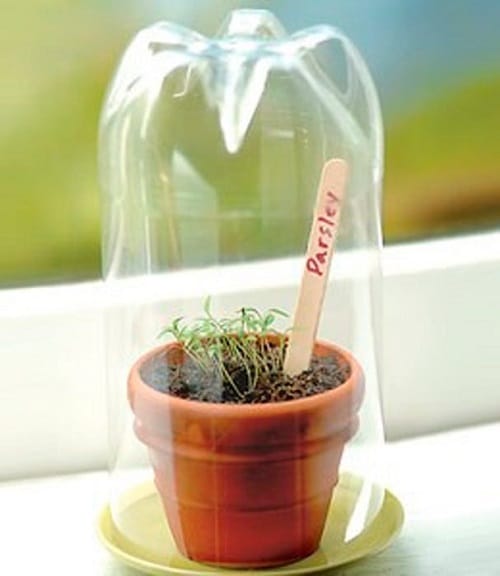
Cut a used plastic soda bottle and put it upside down over the little seedlings to make a mini greenhouse for them. It will be of great help to get seeds and cuttings started.

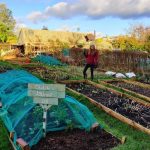

Great tips